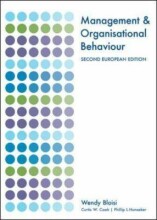Summary: Ecotoxicology
- This + 400k other summaries
- A unique study and practice tool
- Never study anything twice again
- Get the grades you hope for
- 100% sure, 100% understanding
Read the summary and the most important questions on Ecotoxicology
-
Contamination
This is a preview. There are 3 more flashcards available for chapter 30/04/2020
Show more cards here -
Which 3 forms of inorganic contamination exist and what are those exact pollutants?
1. (Heavy) metal pollution:
Heavy metals and toxicity: Hg+>Cd2+>Cr6+>Pb2+>Cu2+>Zn2+
2. Non-metal pollution:
CN-: Highly toxic and mainly used for extracting metals from ore.
NH4+, NO3-, PO43- are not toxic but can cause eutrophication.
NO2- can cause eutrophication, but is also toxic to humans as it can cause blue baby syndrome (reacts with hemoglobin, and therefore affects the oxygen supply).
3. Abiotic factors
Acidity & basicity
Salinty -
What is the definition of persistence and what 6 rules of persistence are there for molecules?
Definition persistency : The eas at which a molecule is able to degrade.Rules :
1. Simple carbohydrates are easy to degrade
2. Tertiary and quaternary carbon and nitrogen atoms are more difficult to degrade.
3. All aromatics are hard to degrade.
4. Chlorinated aromatics or with nitro groups attached are even harder to degrade.
5. Meta substitution to a phenyl group maks it even harder to degrade.
6. PAHs with more than 3 rings are very resistant. -
What do the terms in the 6 rules mean (quarternary & tertiary carbons, aromatics, meta substitution & PAHS?
Tertiary and quaternary carbon or nitrogen: Carbon or nitrogen atom that contains 3 (tertiary), or 4 (quarternary) bonds with atoms that are not hydrogen.
Aromatics: Stable rings with 3 double bonds in them.
Meta substitution: Formation of a phenyl group in which the substituents are positioned in meta configuration, that is one substituent one the first carbon and one at the third carbon.
PAHs: Aromatic rings that are bonded with each other. -
What is the definition of hydrophilic and hydrophobic and how does this relate to bioaccumulation?
Definitionhydrophilic : Molecule with the characteristic that it dissolves quite well in water. The following polar groups indicate that a molecule is hydrophilic:
-OH group (hydroxyl)
-NH or NH2 group (amino)
-C ==O group (Carbonyl)
Definitionhydrophobic (lipophilic) : Molecule with the characteristic that it dissolves poor in water and accumulates in the fatty tissues of organisms. -
What combination is the least desired combination: Toxic and hydrophilic or toxic and hydrophobic (lipophilic)?
Toxic andhydrophobic (lipophilic ) as this results in the accumulation of a toxic molecule within an organism. Although theingestion of toxic substances (which is actually the certain dose of a substance that starts to damage systems within an organism which is for some substances very small and some higher in dosage.) is never good,hydrophilic toxins will become dissolved within your body andexcreted , opposed to a toxichydrophobic (lipophilic ) substance thataccumulates in fatty tissues in an organism. -
Which two states of toxicity exist and what are their definitions?
Acute toxicity:
Exposure to a toxic at a high concentration but for a short time.
Chronic toxicity:
Exposure to toxic substances not necessarily at too high concentrations, but for a constant period of time (e.g. Smoking cigarettes). -
What three common effects of toxicity?
1.Carcinogenic : Toxic has the ability to develop cancer.
2.Mutagenic : Toxic has the ability yo initiate changes in DNA.
3.Teratogenic : Toxic has the ability to be toxic for the offspring.
Important note: Carcinogenic & teratogenic toxins are always simultaneously mutagenic. -
Which 4 types of pesticides exist?
1. Insecticides
2. Herbicides
3. Fungicides
4. Nematicides (for nematodes which are small organisms in the soil) -
What is the problem with Neonicotinoid insecticides?
Low toxicity for humans, also low in lipophilicity (Not that hydrophobic, but more hydrophilic). However, this insecticide has a negative impact on bee populations, which is a major problem nowadays. Bee population are quite low, while they are essential organisms in ecosystems and thus also for humans. -
What is the problem with Glyphosate?
It isnot toxic for mammals nor persistent at all . However, plant roots seem to grow so fast when exposed to this molecule that theplants grow themselves into death and therefore this molecule can be detrimental for plant species.
- Higher grades + faster learning
- Never study anything twice
- 100% sure, 100% understanding
































